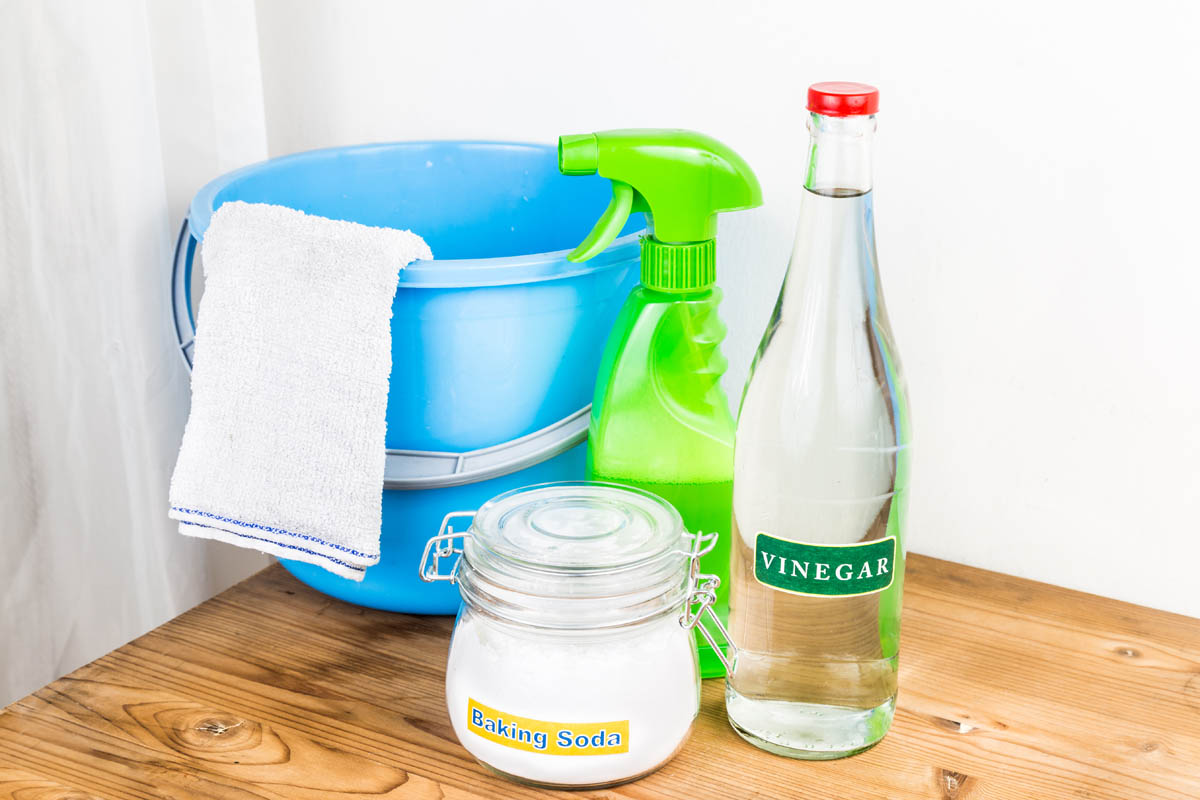- Blot the area. If the urine is still wet, blot up as much as you can with paper towels or old hand towels. Stand on the paper towel to help absorb as much moisture as possible.
- Clean the area. There are many commercially available products on the market designed to remove and neutralise cat urine odour. Some of these products come in powder form, so can be easily vacuumed off, others are liquid (often as a spray), so once you have applied it, it can be dried with the aid of a hairdryer. Commercial products contain enzymes that help to break down the cat urine. Alternatively, you can use a homemade recipe to clean cat urine, which can be found below.
How to locate old urine stains
Old cat urine is a bigger problem as it begins to break down, it is this process that results in the offensive odour. If the urine has dried and you are having problems locating the soiled area use a blacklight. Turn out your lights and move the black light around the floor, walls, and furnishings to help identify soiled areas. Cat urine will glow green. You should be able to purchase a blacklight from your hardware store, or pet store.
Cleaning old urine stains is the same as fresh urine, follow step two (above).
Home remedies for removing cat urine:
The most common household products used to clean cat urine include baking soda, white vinegar and hydrogen peroxide which break down the urine and neutralise the odours.
- Blot up as much urine as you can with paper towels or old hand towels before applying the recipes below.
Baking soda:
- Apply baking soda to the wet urine stain to draw out and neutralise the urine.
- When the baking soda turns yellow, remove and apply some more.
- Repeat until the baking soda stays white. If possible, leave it on the carpet overnight.
- The following day, vacuum it off.
White vinegar:
Method 1:
- Combine one part of distilled white vinegar to two parts warm water to create a spray.
- Mist vinegar spray over areas of cat urine and rub with a paper towel or an old cloth.
- Rinse well afterwards.
Method 2:
- Mix the solution in a bucket and dip a clean cloth into the liquid.
- Rub the stain wet cloth soaked in the vinegar solution.
- After the vinegar dries, wipe away both solution and stain with warm water.
Hydrogen peroxide, baking soda and hand soap:
- Mix 15 ounces (450 ml) hydrogen peroxide, two tablespoons of baking soda, and two squirts of liquid hand soap in a plastic container with a plastic spoon.
- Apply this solution to cat urine stains or odour areas.
- Rinse thoroughly with warm water.
Please bear in mind that as the cat ages the frequency of inappropriate urination may increase. Conditions such as arthritis may make it painful to enter and exit the litter tray, especially if it has high sides. Poor eyesight, dementia, and incontinence may also be contributing factors. Again, if it is always best to seek advice from your veterinarian on these matters as he/she will be able to best advise you on how to help your cat in old age.
Causes of inappropriate urination in cats
Inappropriate urination is a fairly common problem but has many causes. There are generally two reasons why a cat will urinate (or defecate for that matter) on your bed. Behavioural or medical.
With this in mind, it is always important to take your cat for a physical check-up at the veterinarian if it starts urinating outside the litter tray as there could be a medical reason for this. If your cat gets the all-clear, then you will have to try and figure out why it has stopped using the litter tray. Some possible causes include:
- Dirty litter trays. Trays should have solids scooped twice a day.
- Incorrect placement of litter trays. Just as humans like privacy, so do cats. Placing the litter tray in a busy area may result in your cat’s refusal to use the litter tray. Also, some cats will enjoy the privacy of a fully covered litter tray, while this may be too confining for other cats. Generally, I prefer to have a combination of both trays to suit my cat’s different preferences. Another thing to remember is that cats do not like to go to the toilet near where they eat. So make sure the litter box is placed far from your cat’s food and water.
- Type of cat litter used. Doesn’t like the brand/type of litter in the tray.
- Stress is a major cause of inappropriate urination in cats. Factors causing stress in cats can be moving house, the introduction of a new family member (pet or human), a neighbours cat roaming your garden etc. Helping your cat overcome these stresses may well result in inappropriate urination stopping, however, this isn’t always the case. Sometimes the behaviour can become so ingrained in the cat that even once the stress has been removed, the behaviour continues. If this is the case it is a good idea to seek advice from your veterinarian as to how to re-train your cat. Some cat owners have had great success using Rescue Remedy on their cats, although this isn’t advisable until you have spoken to your vet.
- Declawing sometimes leads to a refusal to use a litter box. Often the cat’s paws are tender and scratching around in cat litter can lead to pain and discomfort. In this case, it is advisable to find a softer litter that is less harsh on your cat’s feet.
- Medical problems can include cystitis, feline lower urinary tract disease, partial urinary blockage.

